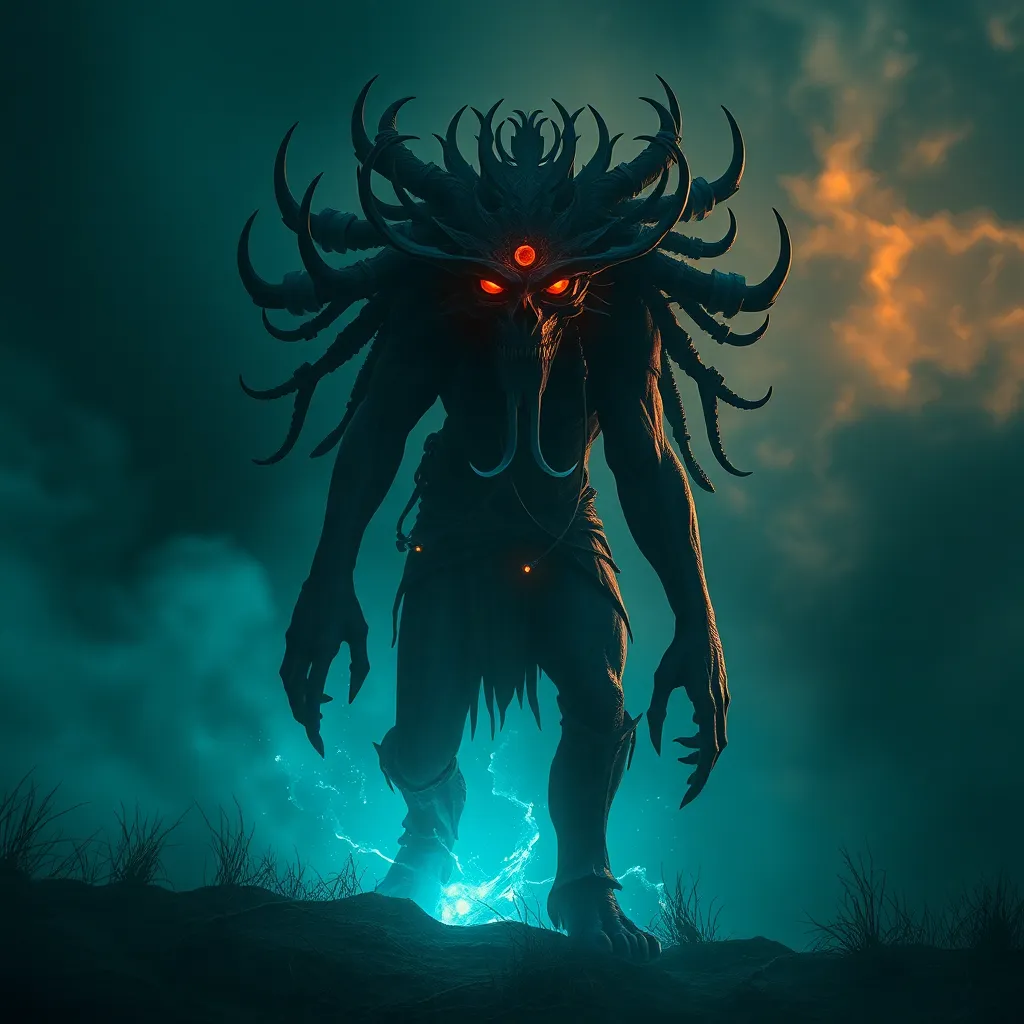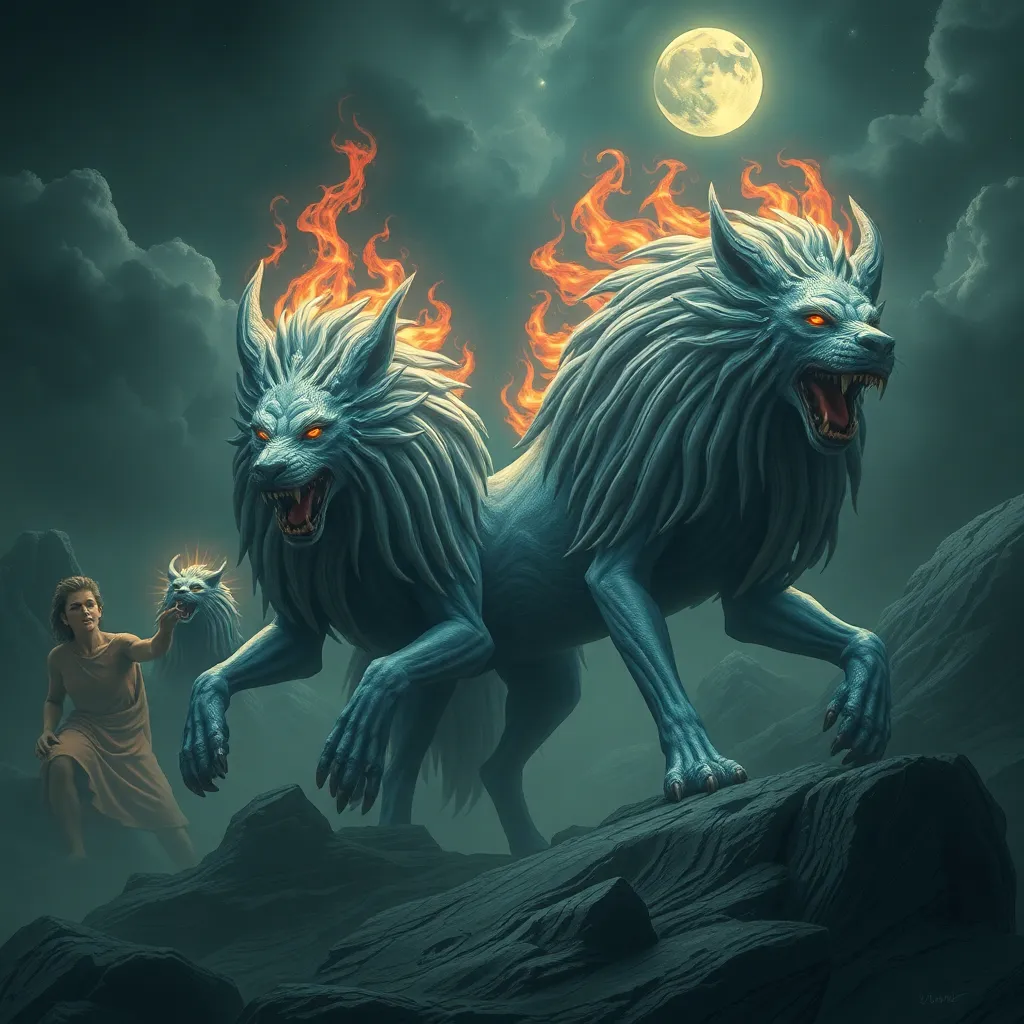The Skinwalker’s Legacy: The Impact of Shapeshifting on Human Culture
I. Introduction
The concept of skinwalkers and shapeshifting has fascinated and terrified people for generations. Skinwalkers, often associated with Navajo culture, are said to be witches who have the ability to transform into animals. This notion of shapeshifting extends beyond individual cultures to a broader human fascination with transformation and identity.
This article aims to explore the cultural significance of skinwalkers and shapeshifting, delving into their historical origins, symbolic meanings, psychological impacts, contemporary interpretations, and the importance of respectful representation of these beliefs. Through this exploration, we can better understand how these legends have shaped human culture and continue to resonate in our lives today.
II. Historical Origins of Skinwalker Legends
A. Indigenous roots in Navajo culture
Skinwalker legends have deep roots in Navajo culture, where they are known as yee naaldlooshii. The term refers to a person who has gained the ability to transform into various animals, typically through malevolent means. Historically, skinwalkers were believed to be powerful witches who could use their abilities for harm, often invoking fear in the communities they inhabited.
B. Evolution of shapeshifting myths across different cultures
While skinwalkers are specific to Indigenous cultures in North America, the idea of shapeshifting is a global phenomenon. Many cultures possess their own variations of shapeshifting myths:
- In Greek mythology, the god Zeus transformed into various forms to interact with mortals.
- In Norse mythology, the god Loki is known for his ability to change shape.
- In African folklore, tales of trickster figures often involve transformation.
C. Comparison with other shapeshifting folklore worldwide
Shapeshifting legends can be found in almost every culture, often reflecting societal norms and fears. For example, in Japanese folklore, the kitsune (fox) can transform into a human, symbolizing cunning and adaptability. In contrast, the werewolf legends in European folklore often evoke fears of losing control and succumbing to primal instincts.
III. Symbolism of Shapeshifting in Human Culture
A. Representations of transformation and identity
Shapeshifting serves as a powerful metaphor for transformation and identity. It represents the fluidity of human nature, allowing individuals to explore different aspects of themselves. In narratives, characters who can shapeshift often undergo journeys of self-discovery, revealing the complexities of their identities.
B. Connection to fears and taboos within societies
Shapeshifting also reflects societal fears and taboos. The ability to transform can symbolize the fear of the unknown or the danger of losing one’s identity. In many cultures, shapeshifters are often portrayed as outsiders or figures who challenge societal norms, prompting discussions about conformity and individuality.
C. Use of shapeshifting as a narrative device in literature and art
In literature and art, shapeshifting is frequently used as a narrative device to explore themes of change and conflict. From classic literature like Metamorphosis by Franz Kafka to modern films featuring superheroes, the motif of transformation invites audiences to reflect on their own lives and the nature of change.
IV. Psychological Impacts of Shapeshifting Beliefs
A. The role of shapeshifting myths in human psychology
Shapeshifting myths often play a crucial role in human psychology, offering explanations for complex emotions and behaviors. These legends can serve as coping mechanisms, helping individuals process their fears and uncertainties about identity and transformation.
B. Case studies of individuals influenced by these legends
There are numerous case studies of individuals who have been impacted by the beliefs surrounding skinwalkers and shapeshifting:
- Some individuals report anxiety and fear when encountering places associated with skinwalker legends.
- Others may feel empowered by the idea of transformation, using it as a metaphor for personal growth.
C. Exploration of the ‘other’ and its implications for society
The concept of the ‘other,’ often embodied by shapeshifters in folklore, raises important questions about societal norms and acceptance. Shapeshifting figures challenge the boundaries of identity, prompting discussions about what it means to belong and how society perceives those who are different.
V. Contemporary Interpretations and Representations
A. Shapeshifters in modern media and popular culture
In contemporary media, shapeshifters have become popular characters in movies, television shows, and literature. From werewolves to vampires, these figures are often depicted with a mix of horror and allure, reflecting humanity’s ongoing fascination with transformation.
B. The resurgence of interest in folklore and mythology
There has been a resurgence of interest in folklore and mythology in recent years, as people seek to reconnect with their cultural roots. This interest has led to a revival of traditional stories, including those related to skinwalkers, in various forms of media.
C. Impact of technology and social media on the perception of skinwalkers
Technology and social media have played a significant role in shaping perceptions of skinwalkers. Online platforms allow for the sharing of folklore, fostering community discussions but also leading to misunderstandings and sensationalism surrounding Indigenous beliefs.
VI. Cultural Appropriation and Misunderstanding
A. The risks of misrepresenting Indigenous beliefs
Misrepresentation of Indigenous beliefs, particularly regarding skinwalkers, can perpetuate stereotypes and cultural misunderstandings. These narratives can be stripped of their cultural significance, leading to a shallow understanding of complex traditions.
B. Consequences of cultural appropriation in storytelling
Cultural appropriation in storytelling often results in the commodification of sacred beliefs. This can lead to the erasure of Indigenous voices and the exploitation of their culture for entertainment purposes.
C. The importance of respectful representation
Respectful representation of Indigenous beliefs and stories is crucial. It is essential to engage with these narratives authentically, honoring their origins and the cultures they come from, rather than appropriating them for sensationalism.
VII. The Legacy of Skinwalkers in Modern Spirituality
A. Shapeshifting as a metaphor for personal growth and change
In modern spirituality, shapeshifting is often viewed as a metaphor for personal growth and change. Many individuals seek to embrace transformation in their lives, drawing inspiration from the symbolism of shapeshifters.
B. Influence on new age spirituality and practices
Shapeshifting themes have also influenced new age spirituality, where practitioners explore the idea of transformation as a means of healing and self-discovery. This reflects a broader trend of seeking personal empowerment through ancient myths.
C. The role of skinwalker legends in contemporary Indigenous movements
Contemporary Indigenous movements often incorporate skinwalker legends as a means of cultural renewal and identity affirmation. These legends serve as a reminder of Indigenous resilience and the importance of preserving traditional knowledge.
VIII. Conclusion
In conclusion, the cultural significance of shapeshifting and skinwalkers is profound, influencing human beliefs and narratives throughout history. These legends encapsulate themes of transformation, fear, and identity, resonating deeply within various cultures.
The enduring legacy of skinwalkers continues to shape our understanding of ourselves and the world around us. It is essential to preserve and respect the origins of these traditions, ensuring that they are honored and accurately represented in contemporary discourse.



